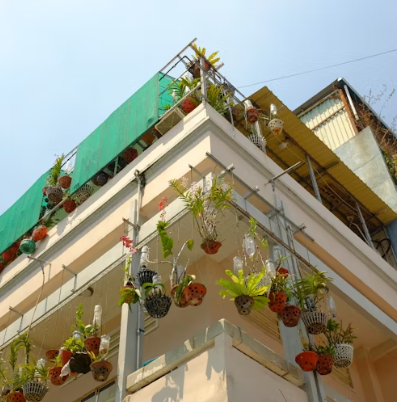
Small-Space Rain Gardens: Turning Tiny Yards Into Eco-Friendly Water Havens
Share
Small-Space Rain Gardens: Turning Tiny Yards Into Eco-Friendly Water Havens
As climate change brings heavier rain and drier spells across the U.S., homeowners are looking for smart ways to manage water naturally. Enter the rain garden — a shallow, planted basin that captures rainwater and filters it back into the ground.
What’s new for 2025? Small-space and balcony-sized versions of these gardens are taking over Google searches, TikTok reels, and sustainable design blogs. Even renters are joining the movement by creating mini rain gardens in planters that mimic the same eco-friendly effects.
1. What Is a Rain Garden?
A rain garden is a shallow, bowl-shaped area planted with native, water-tolerant species. It collects runoff from roofs, driveways, or patios, allowing the water to slowly soak into the soil instead of flooding drains.
In small spaces, it can be built in raised beds, decorative containers, or corner plots — no large yard required!
2. Why Small-Space Rain Gardens Are Trending
-
Climate-ready design: Reduces local flooding and drought stress.
-
Eco aesthetics: Native plants attract bees, butterflies, and birds.
-
Urban practicality: Works for condos, patios, and even balconies.
-
Low maintenance: Once established, they thrive with minimal watering.
-
Policy push: Many U.S. cities now offer rebates or credits for eco-friendly landscaping that captures stormwater.
Social media is full of DIY videos showing compact rain gardens thriving in just a few square feet — proving sustainability doesn’t need acres of land.
3. How to Build a Small Rain Garden
Step 1: Choose the Right Spot
Find a slightly low area that collects water naturally — or place containers where roof or gutter runoff flows.
Step 2: Layer It Smart
-
Base layer: Gravel for drainage.
-
Middle layer: Compost-rich soil.
-
Top layer: Mulch to retain moisture and prevent weeds.
Step 3: Add Native Plants
Pick plants that tolerate both wet and dry periods:
-
Blue flag iris
-
Switchgrass
-
Joe-Pye weed
-
Black-eyed Susan
-
Coneflower
-
Butterfly milkweed
Step 4: Design for Beauty & Function
Cluster plants by height: tall in back, medium in center, groundcovers along the rim. Add stones or logs for texture and insect shelter.
4. Rain Gardens for Balconies & Decks
No ground soil? No problem. Use large waterproof planters or raised beds with drain holes.
Fill them with the same layered mix and native plants. Place trays below to catch overflow — these mini ecosystems filter water beautifully while keeping patios dry.
Pro tip: Add a moisture gauge or sensor to keep watering efficient year-round.
